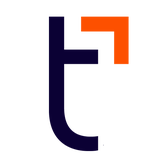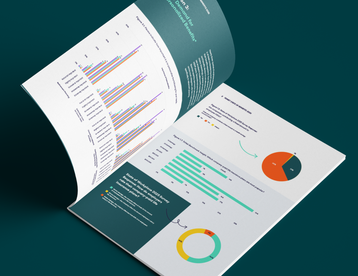Personalization in Employee Benefits: Data Reveals Opportunity for Small Businesses

Table of contents
- 1.Why personalization matters in benefits
- 2.Six ways personalization can show up in benefits
- 3.Decision support tools
- 4.Voluntary benefits that reflect lifestyle
- 5.Mental health and wellbeing access
- 6.Flexible spending and savings accounts
- 7.Provider and care path personalization
- 8.Personalized communication and engagement
- 9.Additional personalization opportunities
- 10.What this means for small businesses
- 11.Compete without outspending
- 12.Drive engagement and retention
- 13.Support culture of belonging goals
- 14.Reduce administrative burden
- 15.Action steps for HR teams
- 16.Conclusion: Personalization as a small business advantage
Employee benefits are no longer a static, one-size-fits-all proposition. Today’s workforce expects choice, flexibility, and—above all—personalization. According to the 2025 State of Small Business Employee Benefits report*, nearly three out of four employees say personalization is at least moderately important across all aspects of their benefits experience. For small and medium-sized businesses (SMBs), this is more than just a preference—it can be a strategic opportunity to deepen engagement, retain talent, and differentiate in a competitive labor market.
But what does “personalization” mean when it comes to benefits, and how can HR teams put it into practice? This article explores why personalization matters, six (or more) ways it can show up, and how small businesses can leverage these insights to create meaningful opportunities for employees and the business alike.
Why personalization matters in benefits
At its core, personalization in benefits means tailoring experiences and offering benefit options that reflect the unique needs, and life stages of employees. It goes beyond offering a broad set of plans—it’s about shaping the journey from enrollment through everyday usage in a way that feels relevant and supportive.
The report shows why this matters:
- Generational drivers: Baby Boomers lead demand for personalization across most benefit categories, while Gen X places particular emphasis on retirement planning. Younger generations, meanwhile, want benefits that reflect lifestyle and identity—from mental health support to pet insurance.
- Plan preference differences: At the time of the survey, a greater percentage of employees were enrolled in traditional PPO and HMO plans than in high-deductible health plans (HDHPs).
- Decision fatigue: With 42% of employees simply rolling over last year’s choices and only 15% analyzing cost effectiveness, personalization can help cut through the noise—guiding workers toward smarter, more confident decisions.
For small businesses, personalization is not just a “nice to have.” It’s a lever for reducing confusion, aligning benefits with employee priorities, and optimizing the return on every dollar invested in people.
Six ways personalization can show up in benefits
1. Decision support tools
Employees often struggle to evaluate trade-offs between premiums, deductibles, and out-of-pocket costs. Personalized decision support—through calculators, side-by-side comparisons, or AI-driven modeling—can help workers choose plans that align with their needs and budgets. With 72% preferring higher premiums, this may suggest to SMBs that some employees favor paying higher upfront costs to lower their potential out-of-pocket costs.
2. Voluntary benefits that reflect lifestyle
According to our report, Gen Z leads adoption of non-traditional benefits for pet insurance (24%) and identity theft protection (20%), while Millennials seem to prioritize accident and hospital indemnity coverage. Offering a cafeteria-style menu of voluntary benefits lets employees select add-ons that can align with their preferences—with minimal impact on employer budget.
3. Mental health and wellbeing access
Across generations, mental health support ranks as the #1 most important health benefit, followed closely by telehealth. Personalization here might mean offering multiple access points—virtual counseling for digital-native employees, in-person sessions for those who prefer face-to-face, and flexible visit limits that accommodate different levels of need.
4. Flexible spending and savings accounts
Consumer-directed accounts like health savings accounts (HSAs) and flexible spending accounts (FSAs) show rising adoption—69% of HDHP participants are enrolled in HSAs, with more than half contributing the maximum. Personalization can mean targeted communication campaigns that explain these options in simple terms and provide tools for employees to model contribution levels.
5. Provider and care path personalization
Beyond plan elections, employees value choice in how and where they receive care. Highlighting providers who specialize in relevant conditions, speak multiple languages, or offer telehealth—can make benefits feel more inclusive and supportive.
6. Personalized communication and engagement
Finally, personalization extends to how benefits are explained and administered. An employee approaching retirement will likely appreciate detailed information about how to learn more about Medicare enrollment, while a younger employee may prefer quick, mobile-friendly updates. Tailoring communication channels and tone creates relevance at every touchpoint.
Additional personalization opportunities
- Financial wellness programs to support different career stages and financial goals.
- Personalized preventive resources may help people meet their wellness journey.
- Learning opportunities—such as webinars or workshops—curated to align with employees’ professional growth or expressed interests.
- Flexible work perks (childcare support, eldercare resources, gym memberships) that employees can take advantage of to align with their life stage needs.
The principle is the same: personalization is less about adding cost and more about communicating benefits in ways that matter most to employees.
What this means for small businesses
1. Compete without outspending
Small businesses may not match enterprise budgets, but personalization levels the playing field. By tailoring communications, offering benefit options, and using data to guide decisions, small businesses can create a big-company experience without big-company costs.
2. Drive engagement and retention
Benefits are among the most tangible expressions of employer support. Personalization shows employees that the company recognizes their individuality—strengthening engagement, loyalty, and retention.
3. Support culture of belonging goals
Personalized benefits also support a culture of belonging by meeting the diverse needs of employees across roles, life stages, and experiences. From traditional to non-traditional voluntary benefits, robust offerings help employees feel seen and supported.
4. Reduce administrative burden
Ironically, personalization doesn’t have to increase HR complexity. Modern benefit platforms offer self-service tools, AI-powered tools, and automated communications that can help streamline administration while enhancing the employee experience.
Action steps for HR teams
- Review your current offerings. Identify which benefits are widely used, which are underutilized, and where employees express unmet needs.
- Use insights. Use the report’s insights to get a snapshot of what employees and employers may value and consider.
- Leverage voluntary benefits. Offer a wide menu of employee-paid options that are cost-effective for employers while still delivering meaningful value to employees.
- Invest in decision support tools. Even simple calculators or side-by-side plan comparisons can help transform enrollment experiences.
- Personalize communication. Deliver benefit updates through multiple channels—email, mobile apps, one-on-one sessions—to meet employees where they are.
- Highlight mental health and telehealth. These are valued priorities and can serve as a foundation for broader personalization.
- Promote savings accounts. Educate employees on HSAs and FSAs with personalized nudges based on medical plan elections.
Conclusion: Personalization as a small business advantage
The 2025 State of Small Business Employee Benefits report makes it clear: employees expect personalization, and businesses that deliver it can gain a competitive edge. Nearly three out of four employees say tailored benefits are important, and generational preferences reveal diverse, nuanced needs. For SMBs, personalization is not just about offering more benefits, it’s about making benefits more relevant, informative and engaging.
By embedding personalization into enrollment, communication, voluntary options, and everyday usage, HR teams can transform benefits from a transactional necessity into a strategic driver of retention, engagement, and organizational success.
This article is for informational purposes only, is not legal, tax or accounting advice, and is not an offer to sell, buy or procure insurance. It may contain links to third-party sites or information for reference only. Inclusion does not imply TriNet’s endorsement of or responsibility for third-party content.

TriNet Team
Table of contents
- 1.Why personalization matters in benefits
- 2.Six ways personalization can show up in benefits
- 3.Decision support tools
- 4.Voluntary benefits that reflect lifestyle
- 5.Mental health and wellbeing access
- 6.Flexible spending and savings accounts
- 7.Provider and care path personalization
- 8.Personalized communication and engagement
- 9.Additional personalization opportunities
- 10.What this means for small businesses
- 11.Compete without outspending
- 12.Drive engagement and retention
- 13.Support culture of belonging goals
- 14.Reduce administrative burden
- 15.Action steps for HR teams
- 16.Conclusion: Personalization as a small business advantage






